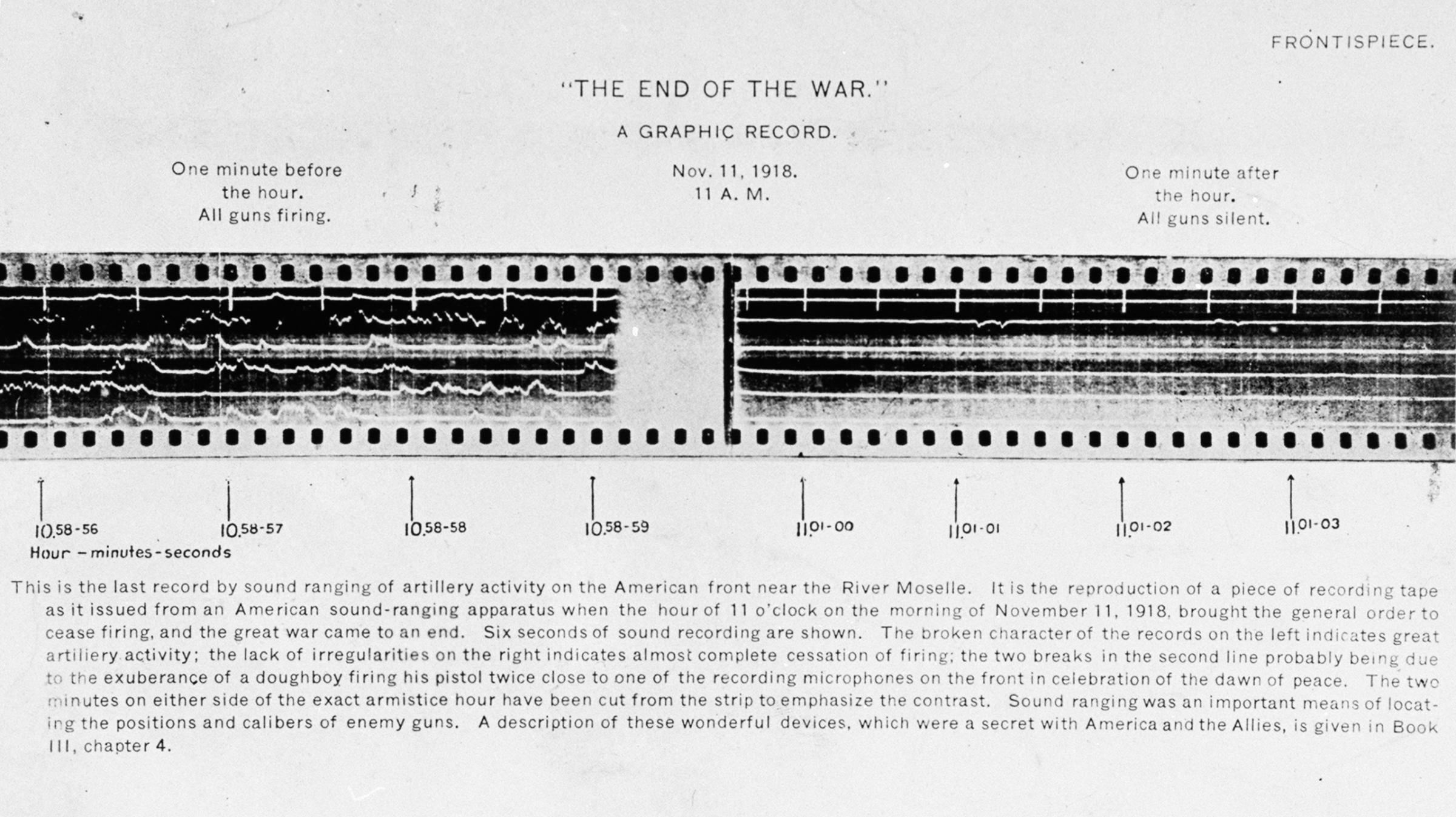
The most memorable graphic representations of historical events are often those we can take in at a single glance. Charles Minard’s famous mapping of Napoleon’s disastrous Russian campaign in 1812, for instance — widely celebrated as the greatest statistical graphic ever devised — is both elegant, and elemental. Its greatness derives, in large part, from its simplicity.
The recording tape pictured above, meanwhile — while not quite on a par with Minard’s creation — is another striking distillation of a consequential moment. In this case, the moment is among the 20th century’s weightiest: 11 a.m. on Nov. 11, 1918, the instant the First World War ended. More accurately, that was the very moment that the war’s final ceasefire went into effect; the belligerents had signed the armistice agreement six hours before, and at 11 a.m. sharp, the guns stopped firing.
To the left, the jagged lines on the recording tape indicate massive artillery activity just seconds before the ceasefire goes into effect; the smooth, straight lines to the right confirm that, very suddenly, all went very quiet.
No single picture can possibly capture the scope and the import of that instant, when four years of mechanized carnage came to an abrupt, long-dreamt-of end. But for a stark, rather simple image, this reproduction of a few seconds’ worth of data on a century-old recording tape is remarkably eloquent — and surprisingly moving.
NOTE: For a better, more readable view of the picture’s complete — and fascinating — caption, view it in “Full Screen” mode.

More Must-Reads from TIME
- Donald Trump Is TIME's 2024 Person of the Year
- Why We Chose Trump as Person of the Year
- Is Intermittent Fasting Good or Bad for You?
- The 100 Must-Read Books of 2024
- The 20 Best Christmas TV Episodes
- Column: If Optimism Feels Ridiculous Now, Try Hope
- The Future of Climate Action Is Trade Policy
- Merle Bombardieri Is Helping People Make the Baby Decision
Contact us at letters@time.com